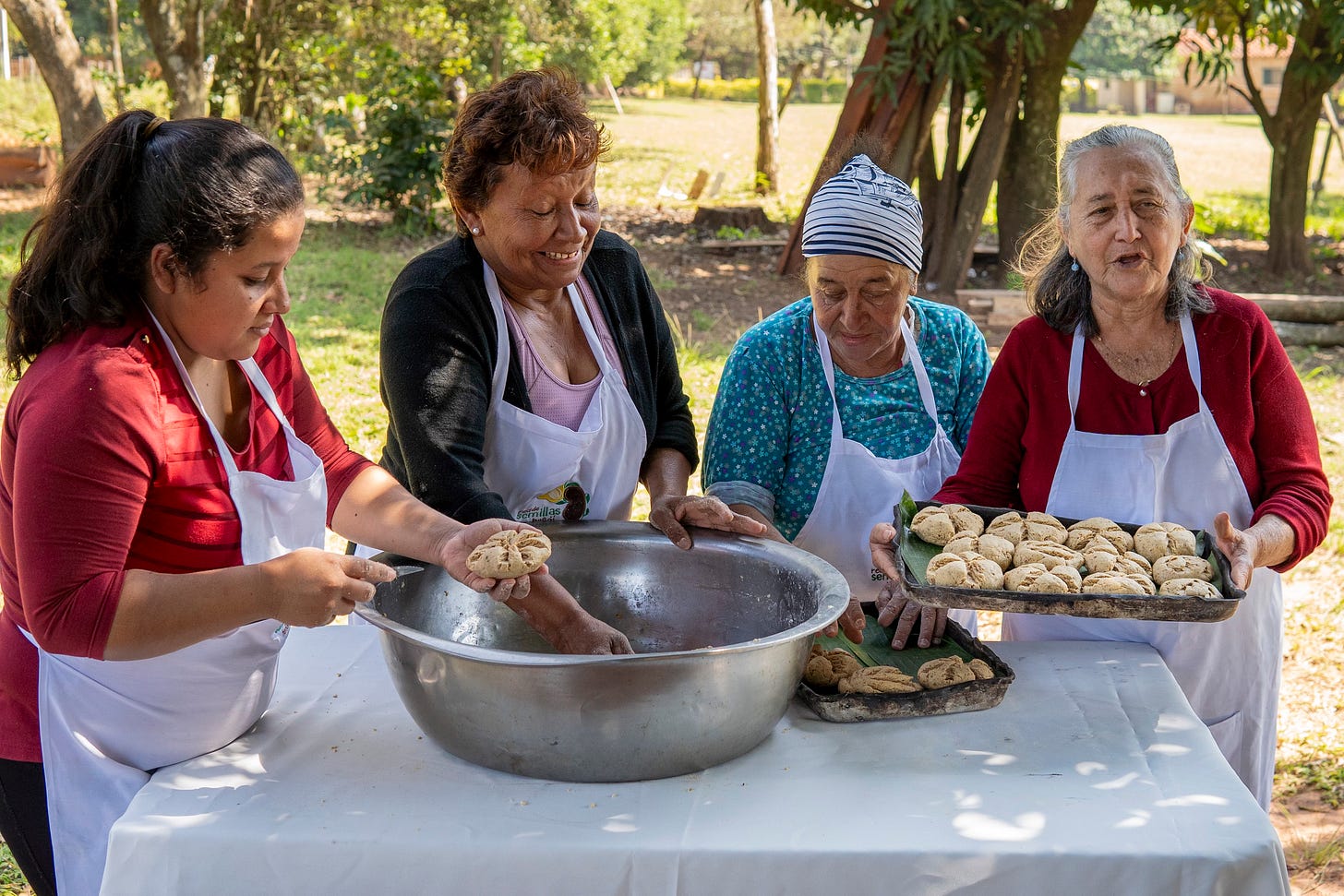Edited by Sarah Peters Kernan, Kelli Kimura, and Melissa Reynolds
Recipes are more than simple instructions—they invite us to enact their processes and physically engage with texts from the past. Whether termed “making,” “remaking,” “recreating,” or “reenacting,” this act of following historical recipes offers a powerful methodology for connecting with and understanding the past in a direct and tangible way. These experiences can be challenging and frustrating, but also enlightening and fruitful. The Recipes Project has long featured contributors’ stories about making foods, cosmetics, dyes, and perfumes, and more from historical sources, often highlighting the rewards and surprises of these endeavors. Many have found particular success in classroom settings, guiding students through the creation of historic recipes and witnessing the meaningful insights that emerge. Furthermore, major academic projects like Making and Knowing and Refashioning the Renaissance have demonstrated that hands-on making is an invaluable tool for historical inquiry, teaching, and research.

This month, we explore “Making” from a variety of angles: in six new episodes of our podcast, Around the Table, hosted by RP co-editor Sarah Peters Kernan, and in eight posts by authors who define “making” capaciously—from the historical reconstruction of perfume or medicine, to content-making online, to community-making through culinary practice, to making as a means of combatting the pernicious encroachment of generative AI within the classroom.
Every Thursday through September 18, we’ll drop a new episode of Around the Table, featuring interviews with guests who describe what making means to them. For some, it is recreating a historic recipe as closely as possible. For others, it is creating something new in a modern setting. However imperfect the process or the outcome, making is a way to bring a moment of history to life and invite awareness to an aspect of the past. Our guests embrace experimentation and a process of trial and error, reinforcing that no recipe is entirely complete, regardless if it is a household recipe for biscuits or an artisan’s notes on making an ink or wine. Recreating recipes also hints at a better understanding of the labor involved with daily activities, such as the physical effects on one’s hands after doing the same repetitive motions with a needle, quill, parchment, or mortar for hours every day. Or the preciousness of certain ingredients which were notoriously difficult or expensive to obtain or prepare. These practical realities of making attract and engage large audiences; all our guests teach and engage through a range of public-facing means, including social media, blogs, podcasts, non-academic books, and small businesses. They have all learned that making is a way to make abstract ideas come alive in a very real and material way.
New Around the Table episodes dropping every Thursday:
August 14: Edible History with Victoria Flexner
August 21: Archaeology of Food with Crystal Dozier
August 28: British Food History with Neil Buttery
September 4: Early Medieval Embroidery with Alex Makin
September 11: Cooking in the Archives with Marissa Nicosia
September 18: Medieval Manuscripts with Sara Charles
In the eight posts that complement these episodes, published on Tuesdays, community activists, teachers, scholars, and physicians-in-training further explore making in all its variety. Like some of our podcast guests, a few of these authors view making epistemologically, as a means to reconstruct ephemeral experiences from the past, like sounds, smells, or tastes. Others bring making into the classroom where recipes and cookbooks become pedagogical tools which foster confidence, creativity, and interest. And a few even push us to think of making beyond the act of physical reconstruction. As it turns out, recipes are crucial for making all sorts of things: community, tradition, or even content for social media.
Posts in this issue:
August 12: “Recetario Soberano”: Defending Sovereignty One Recipe at a Time, by Ángel Tuninetti and the Centro de Estudios Heñói Team
August 12: Recipes as Pedagogical Resistance: Teaching Food Writing in an AI Era, by Bonnie Shishko and Shawn Bowers
August 19: Retracing our Roots, by Anna Marie Smith and Tom Cook, Fatto a Mano Project
August 26: Mixing Rice, Making Self: Chef Edward Lee’s Theory of Bibimbap, by R. Claire Bunschoten & Ben D. Lee
September 2: Reconstructing an Italian Perfume from the Nineteenth Century, by Charlotte Gaudry
September 2: A Handheld Cabinet of Curiosities: Kitchenalia, Social Media, and the Cultural History of Collecting, by Esther Martin
September 9: Chocolate, Poems, and Virtual Kitchens: Reconstructing the Early Modern Experience, by Sara de Blas Hernández
September 16: A Cure for Cardiacle: Making and Tasting a Medieval Remedy for Heart Ache, by Caleb Prus
We hope you'll enjoy this issue on making food, making culture, making identity, making history, making expertise, making content, making manuscripts, making medicine, and making community.
—The Recipes Project Team

